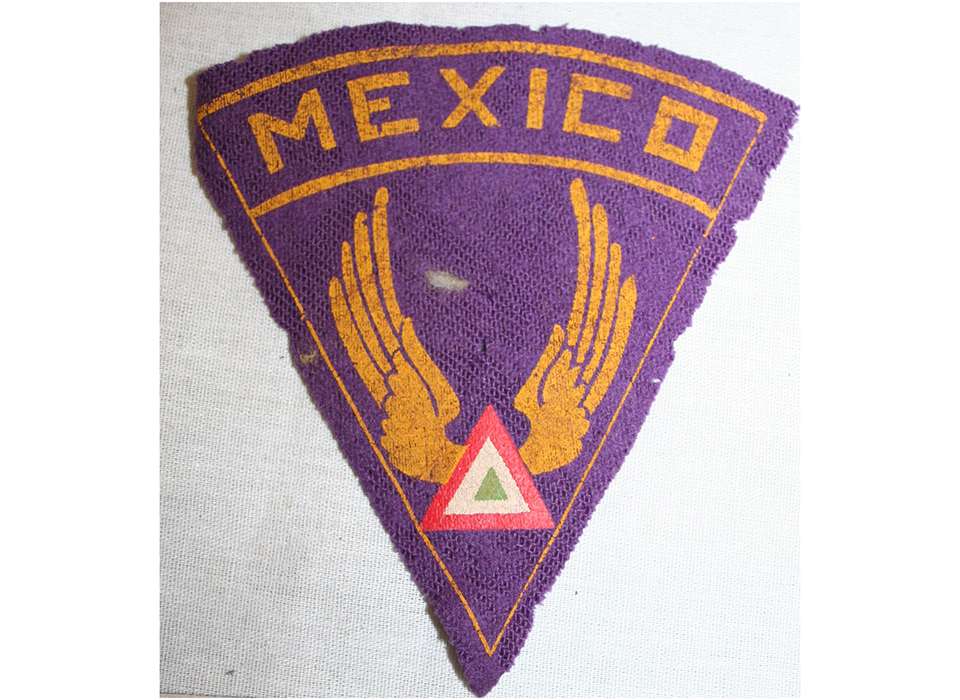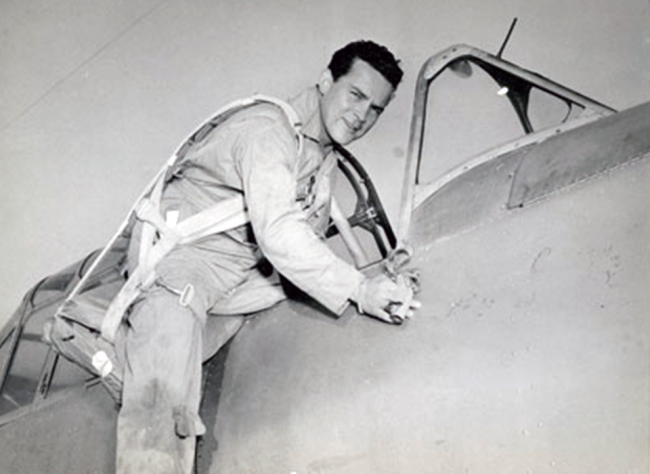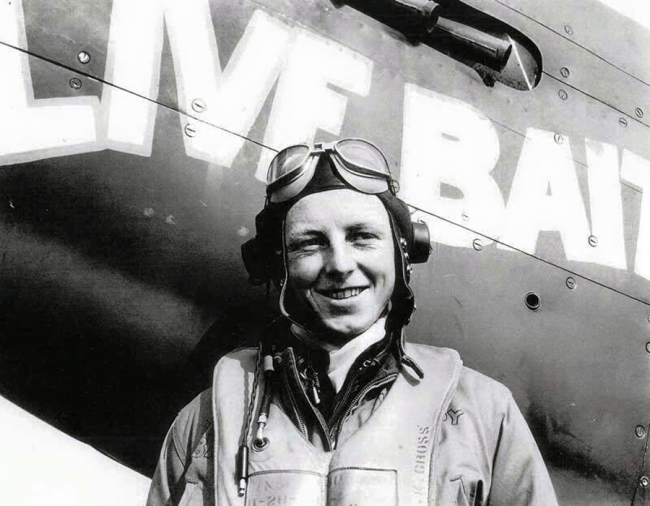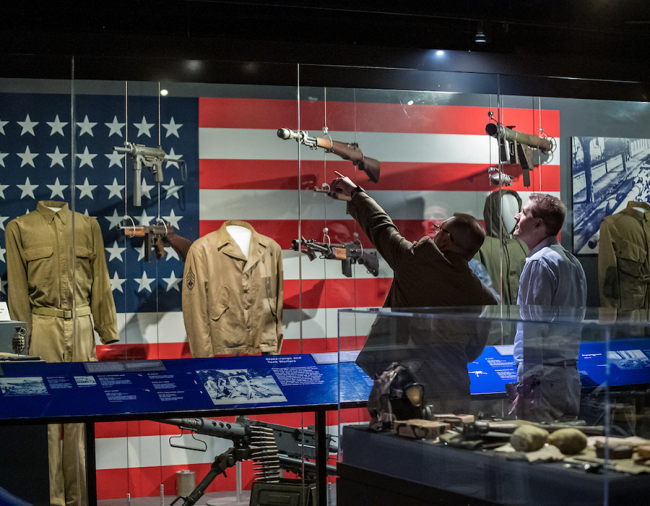Top image courtesy of The National WWII Museum, Gift of Grace A. Forsch Bagg, 2010.161.308.
In collections of wartime patches, the winged roundel of the Mexican Air Force stands apart. This extraordinary unit was Escuadrón Aéreo de Pelea 201; the Aztec Eagles. Consisting of 36 volunteer pilots and 264 ground personnel, these men served in the Pacific during the final months of combat with the Japanese. Only Japan’s capitulation in August 1945 prevented more Mexican flyers from entering service in time for the bloody beginning of the invasion of the Japanese home islands planned for November.
The genesis of this unique fighting unit started years before, on the other side of the world. In Germany’s flurry of U-boat activity off the US East Coast in 1942, two Mexican tankers were caught in the crossfire. Though clearly marked so as to not be mistaken for British or American ships, the German subs sent them to the bottom. These aggressions compelled Mexico to declare war on Germany, Japan, and Italy in May of 1942.
The war opened up many opportunities for the United States and Mexico to solidify their partnership in the face of threats from abroad. The countries shared ports, airfields, and other facilities and the US purchased large amounts of copper and zinc from Mexico for its war production needs.
After a long debate, Mexican President Manuel Ávila Camacho decided to accept the US invitation to train Mexican combat flyers and their support teams. The men who comprised the core of this first flying unit moved to Texas in 1944. After months of training in smaller aircraft, the young Mexican pilots finished their instruction in American-built Republic P-47 Thunderbolt fighters. American flyers fondly called the aircraft “The Jug,” and the newly-minted Mexican aviators followed suit, referring to their new plane as “El Jarro.”
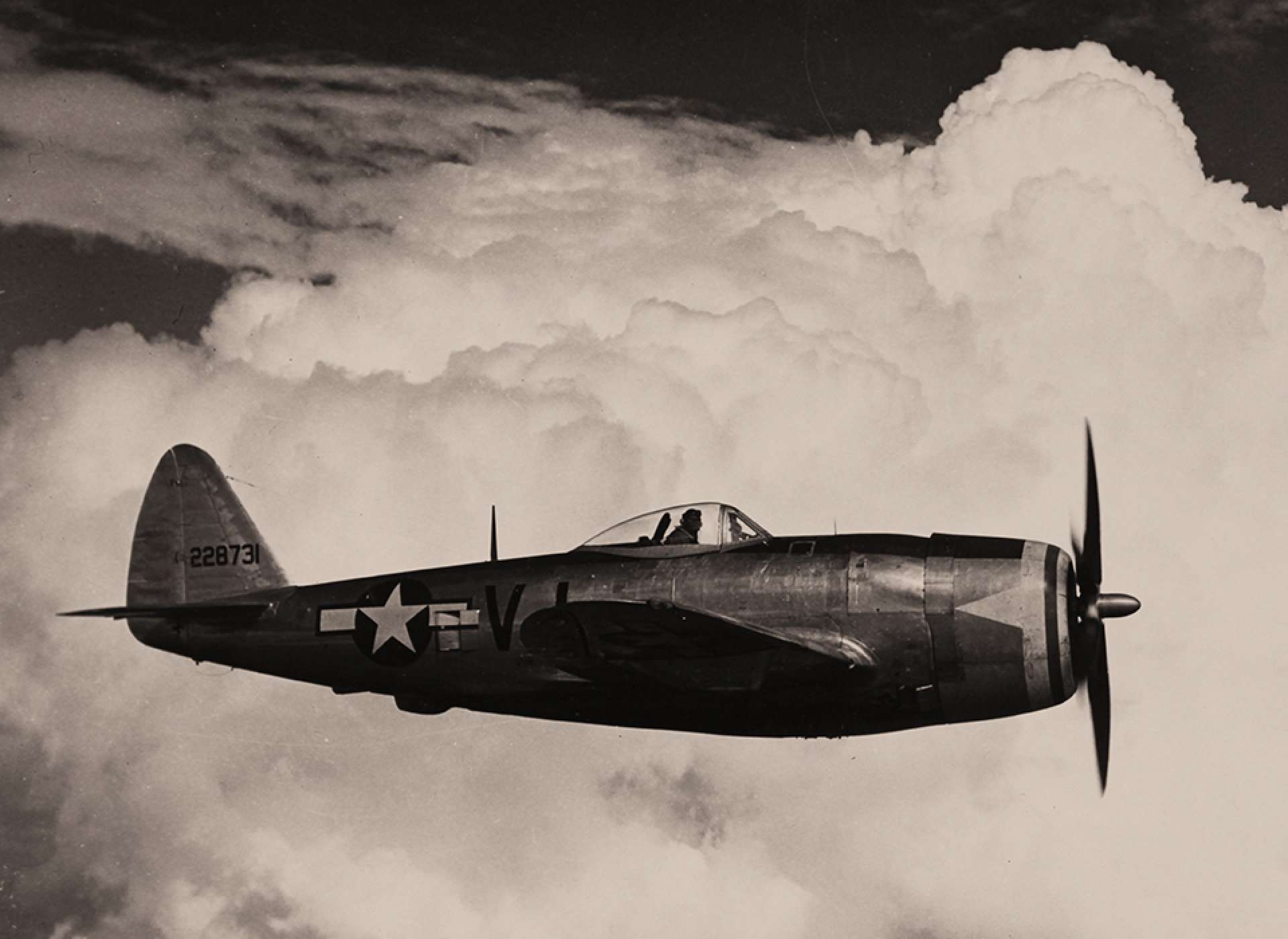
The big Republic P-47 Thunderbolt was lovingly called “The Jug” by American flyers. The Mexican aviators followed suit, naming the fighter “El Jarro.” Courtesy National Archives.
While in the United States, the Mexican flyers adopted a mascot. Walt Disney’s cartoon character Panchito Pistoles, an anthropomorphic chicken described as a “bombastic trigger-happy caballero,” first appeared as the aviators were wrapping up their training. The star of Disney’s musical feature, The Three Caballeros, became the squadron’s unofficial symbol as it shipped off to combat.
Escuadrón 201 landed in the Philippines and were attached to the American 58th Fighter Group—a unit who had been tangling with the Japanese in the South Pacific for more than a year. All aircraft in the 58th looked similar with wide black bands on their fuselage and wings in order to aid with quick identification in a dogfight. But the Mexican flyers added their own unique flourishes to differentiate their Jarros from the rest. In the place of the red and white stripes on the tails of most 58th aircraft, which mimicked “Old Glory,” Escuadrón 201 machines flew with green, white and red rudders—an echo of the three vertical fields seen on Mexico’s flag. The Aztec Eagles’ planes entered combat adorned with two nation’s insignia, both the “stars and bars” of the United States and the triangular red, white, and green roundel of their home nation.
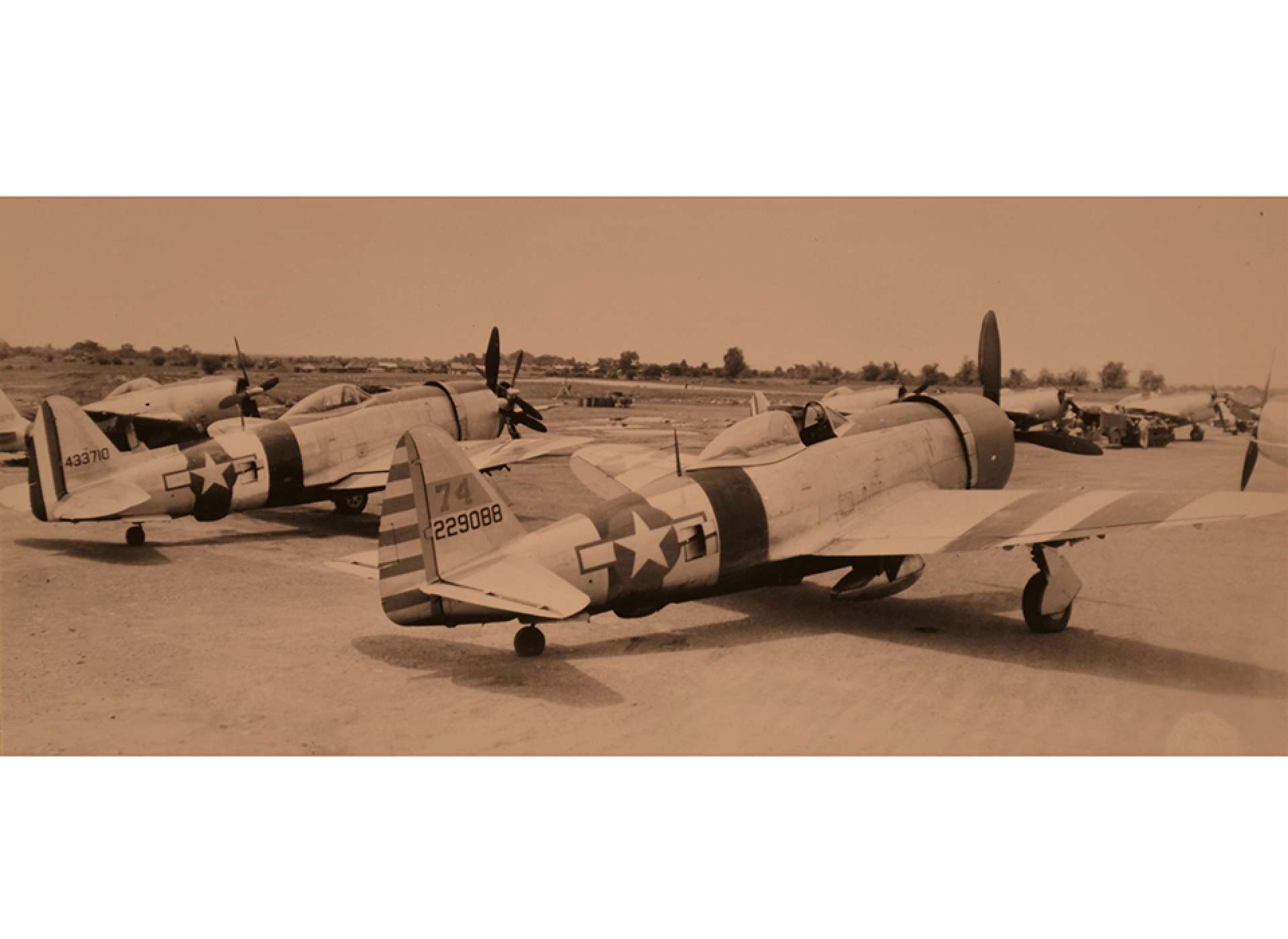
Mexican and American aircraft stand side-by-side at Clark Field in the Philippines. The one on the left is a 201 Escuadrón aircraft with a vertically-striped tail. If you look closely, you can see the Mexican national insignia on the fighter’s right wing. Courtesy National Archives.
Like most young flyers, the pilots of the 201st dreamed of dueling with Zeros in the blue skies above the Pacific. But the reality of daily life for the American and Mexican pilots of the 58th was dirty, dangerous, and often thankless. They supported ground combat operations of American and Filipino armies on Luzon, dropping hundreds of 1,000 and 500-pound bombs and conducting treacherous strafing runs over Japanese positions. Beyond, the flyers participated in several seven hour missions north, lugging loads of bombs to enemy targets on the island of Formosa (Taiwan).
When the 58th Fighter Group moved to Okinawa in July 1945, the Escuadrón 201 stayed behind to support ongoing activities in the Philippines. In addition, they were depleted. Replacements had yet to arrive and several aircraft, along with eight of the original pilots, had been lost in training accidents, long-range operations, and combat.
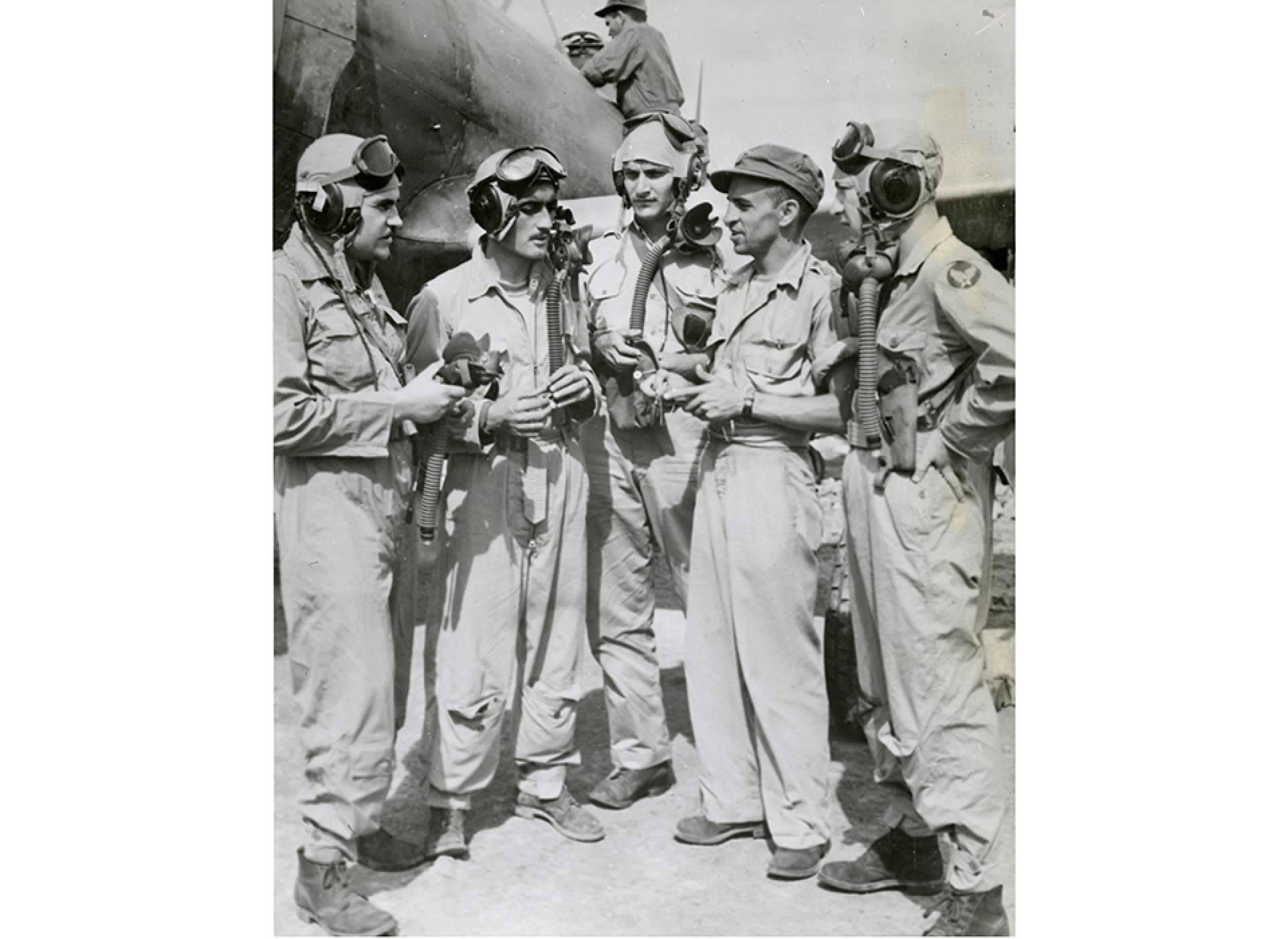
Aztec Eagles pilots Lt. Raul Garcia Mercado, squadron commander Capt. Radames Gaxiola, Lt. Manio Lopez Portillo, Capt. Pablo Rivas Martinez and Lt. Roberto Urias Abelleyka review a mission plane before takeoff at Luzon in July 1945. The National WWII Museum, Gift in Memory of Isaac Utley, 2012.019.234.
When the war came to an end, the Aztec Eagles returned home. At a parade in Mexico City, the returning heroes handed over their battle flag to President Ávila Camacho. During his radio address that day, broadcast across Mexico, he stated:
“You return with glory, having complied brilliantly with your duty and, in these moments, in this historic Plaza, you receive the gratitude of our people.”
President Ávila Camacho
The Aztec Eagles were Mexico’s only military unit to ever engage in combat outside the country’s national borders. In the years after World War II, no less than five of the young pilots who began their flying careers in Escuadrón 201 would reach the rank of general in the Mexican Air Force.
Cite this article:
MLA Citation:
APA Citation:
Chicago Style Citation:
